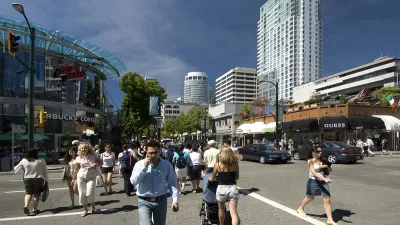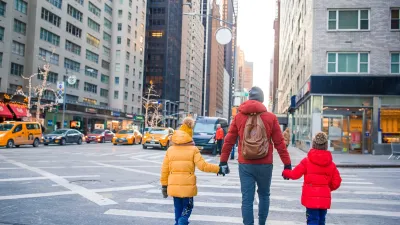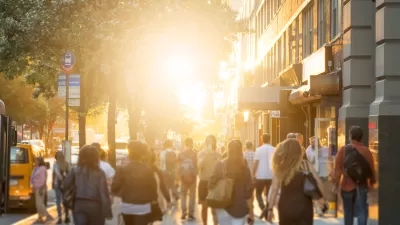Even if today's renters and homebuyers are more likely to want urban life and walkable neighborhoods than their parents, plenty of political obstacles stand in their way.

Over the past few years, I’ve read a lot of articles and blog posts proclaiming that cities are back: that millenials want to drive less and live in cities, and that suburbs as we know them may even be dying.
I agree that many consumers demand more walkable development, both in cities and in suburbs. But even in relatively prosperous, safe cities, the political obstacles to meeting this demand are enormous. To name a few:
*Zoning. The increased desirability of urban life means that in many central cities and walkable inner suburbs, there is simply not enough housing to go around. But zoning law is generally designed to limit density (i.e. neighborhood population), which means that if a landowner wants to build new housing, it will usually have to apply to the city for a rezoning. However, rezonings tend to be politically difficult, because people who live in a neighborhood tend to like it the way it is- otherwise they would be living somewhere else. So as long as zoning is designed to limit density and accommodate present residents at the expense of future residents, urban cores will never be able to accommodate consumer demand. (I note that this is equally true for already built-out suburbs- so in many regions, the only easy place to build new housing is at the fringe of suburbia).
*Transit. Many Americans may wish they could drive less- but if their residences and jobs aren’t in places with good public transit, they may never get the chance. The highway lobby of road-builders and suburban developers has plenty of money to give to politicians, while there isn't really much of a transit lobby (beyond bureaucrats who can't give campaign contributions, and environmentalists who are more interested in other issues). So whenever economic growth flattens, public transit is one of the first things to be cut back; after the 2008-10 financial crisis, nearly every American city areduced transit service. (To see a few examples, just google 'transit cutbacks.') And even in relatively good times, transit is politically vulnerable because, unlike highways, transit often lacks a reliable source of funding. For example,Seattle plans to eliminate 28 bus routes this fall to make up for weak sales tax revenues, and to eliminate even more routes in 2015.
*Street design. Many commercial streets are designed for high-speed traffic- for example, the eight-lane street near my former apartment in Jacksonville, Florida. Because a pedestrian is more likely to be killed by a car going 40 mph than by one going 20 mph, such streets are not particularly safe for pedestrians. In theory, these streets could be retrofitted. For example, a city could effectively slow traffic by widening sidewalks and medians, thus reducing the number of traffic lanes. However, these changes would cost money and be politically controversial.
*Law enforcement and the criminalization of walking. Environmentalists and public health advocates may want people to walk- but some police and prosecutors in automobile-dependent places disagree. If you walk when a signal doesn’t tell you to walk, you can be fined for the automobile-lobby-created offense of “jaywalking” or even arrested. In fact, if you walk with a child, you can even be arrested and prosecuted if the child gets hit by a car. If you let your child walk anywhere, you can be arrested and prosecuted, and Child Protective Services will try to take the child away from you on the grounds that you are endangering his or her welfare. (Because nothing says “keeping your child safe” like giving him or her a chance to become one of the 30,000-odd Americans killed in car crashes every year).
All of these problems are soluble in theory. Americans could pay for better public transit, design streets to be safer for pedestrians, deregulate density so that more people could have the chance to live in urban cores, and hire police and prosecutors who don’t view walking as a crime waiting to happen. But all of these changes may be politically difficult.

Alabama: Trump Terminates Settlements for Black Communities Harmed By Raw Sewage
Trump deemed the landmark civil rights agreement “illegal DEI and environmental justice policy.”

Study: Maui’s Plan to Convert Vacation Rentals to Long-Term Housing Could Cause Nearly $1 Billion Economic Loss
The plan would reduce visitor accommodation by 25% resulting in 1,900 jobs lost.

Planetizen Federal Action Tracker
A weekly monitor of how Trump’s orders and actions are impacting planners and planning in America.

Waymo Gets Permission to Map SF’s Market Street
If allowed to operate on the traffic-restricted street, Waymo’s autonomous taxis would have a leg up over ride-hailing competitors — and counter the city’s efforts to grow bike and pedestrian on the thoroughfare.

Parklet Symposium Highlights the Success of Shared Spaces
Parklets got a boost during the Covid-19 pandemic, when the concept was translated to outdoor dining programs that offered restaurants a lifeline during the shutdown.

Federal Homelessness Agency Places Entire Staff on Leave
The U.S. Interagency Council on Homelessness is the only federal agency dedicated to preventing and ending homelessness.
Urban Design for Planners 1: Software Tools
This six-course series explores essential urban design concepts using open source software and equips planners with the tools they need to participate fully in the urban design process.
Planning for Universal Design
Learn the tools for implementing Universal Design in planning regulations.
Caltrans
Smith Gee Studio
Institute for Housing and Urban Development Studies (IHS)
City of Grandview
Harvard GSD Executive Education
Toledo-Lucas County Plan Commissions
Salt Lake City
NYU Wagner Graduate School of Public Service






























